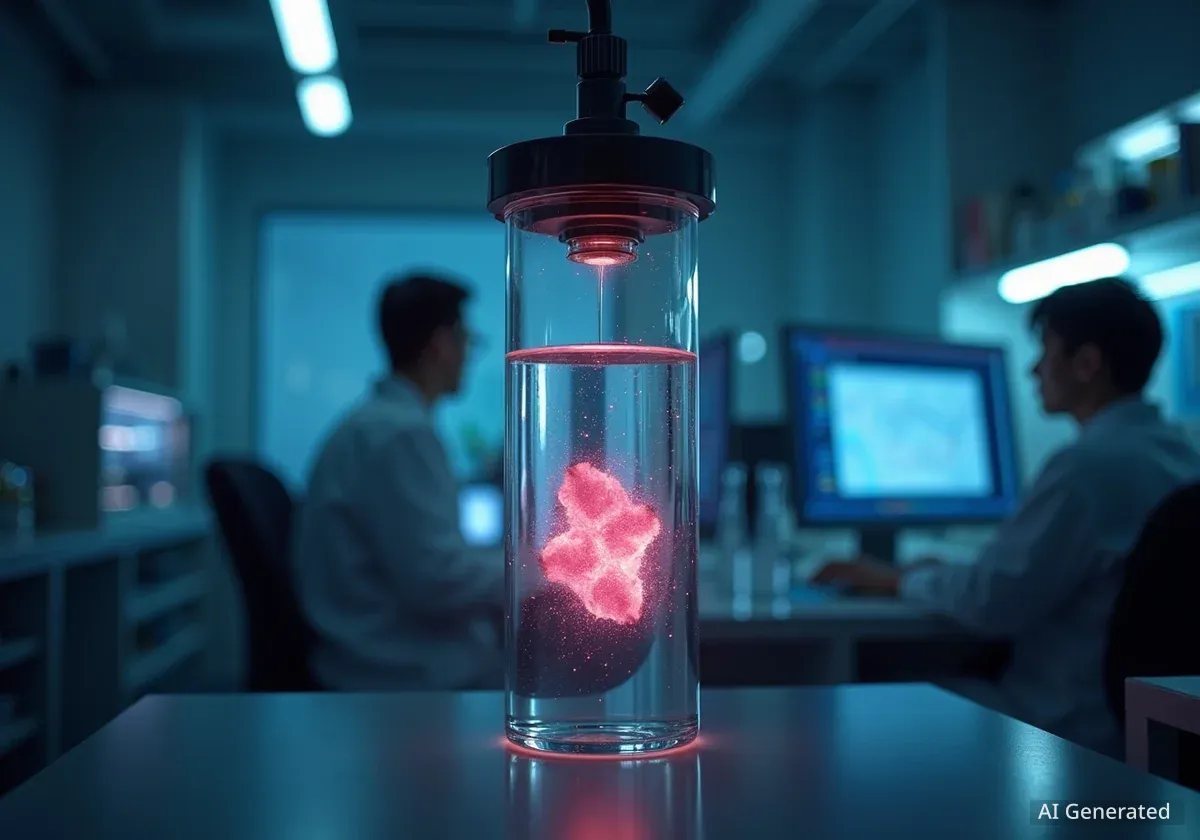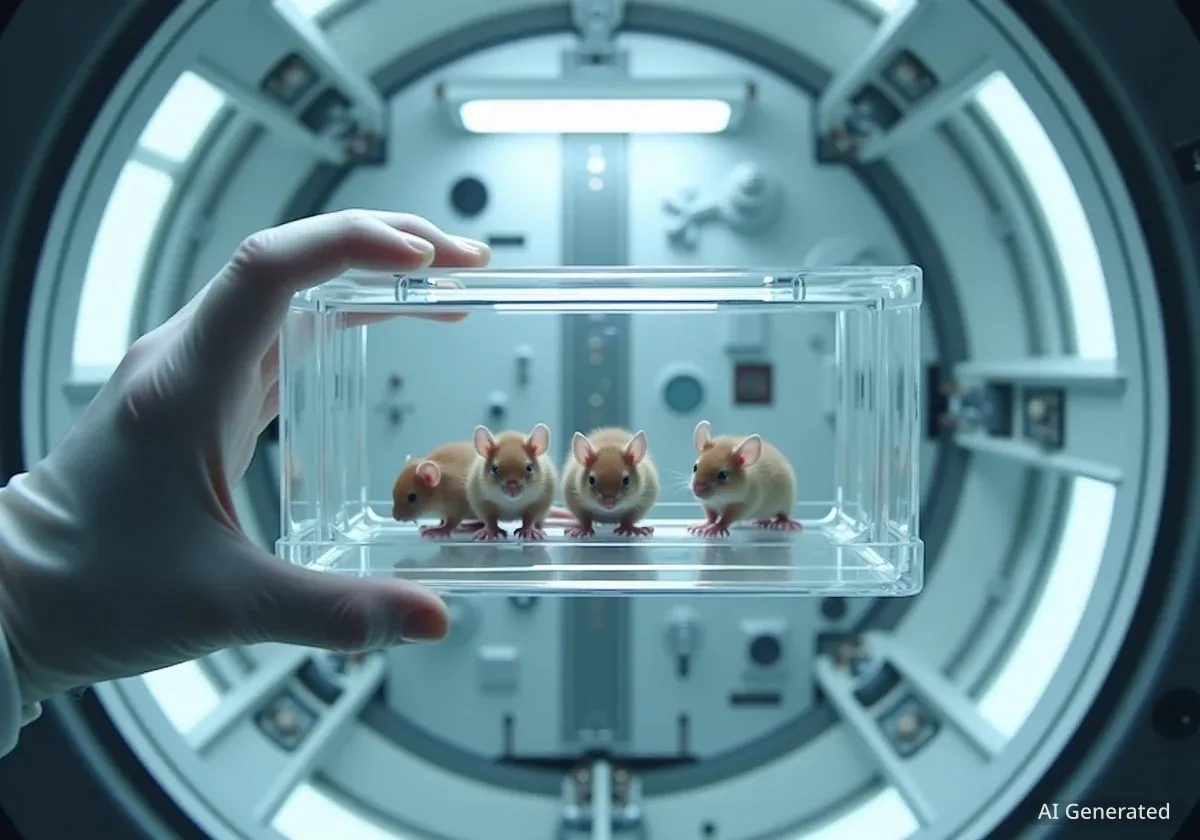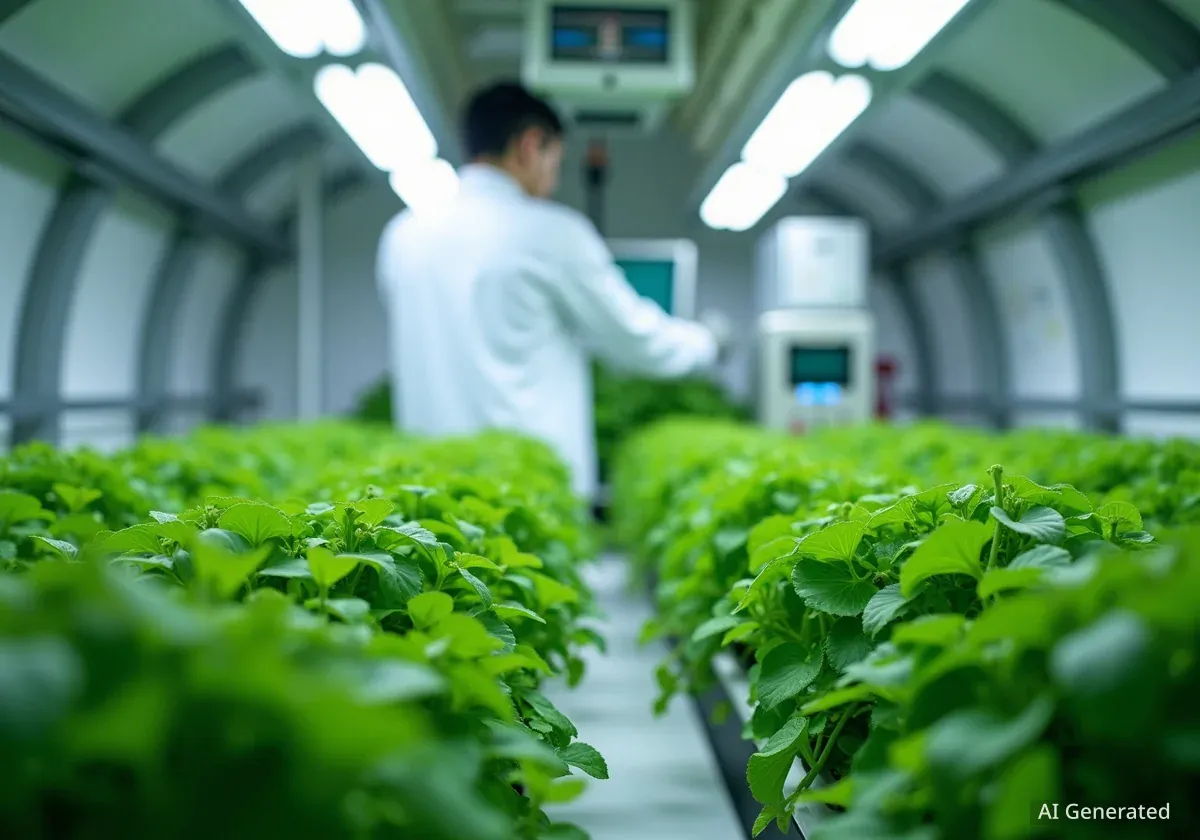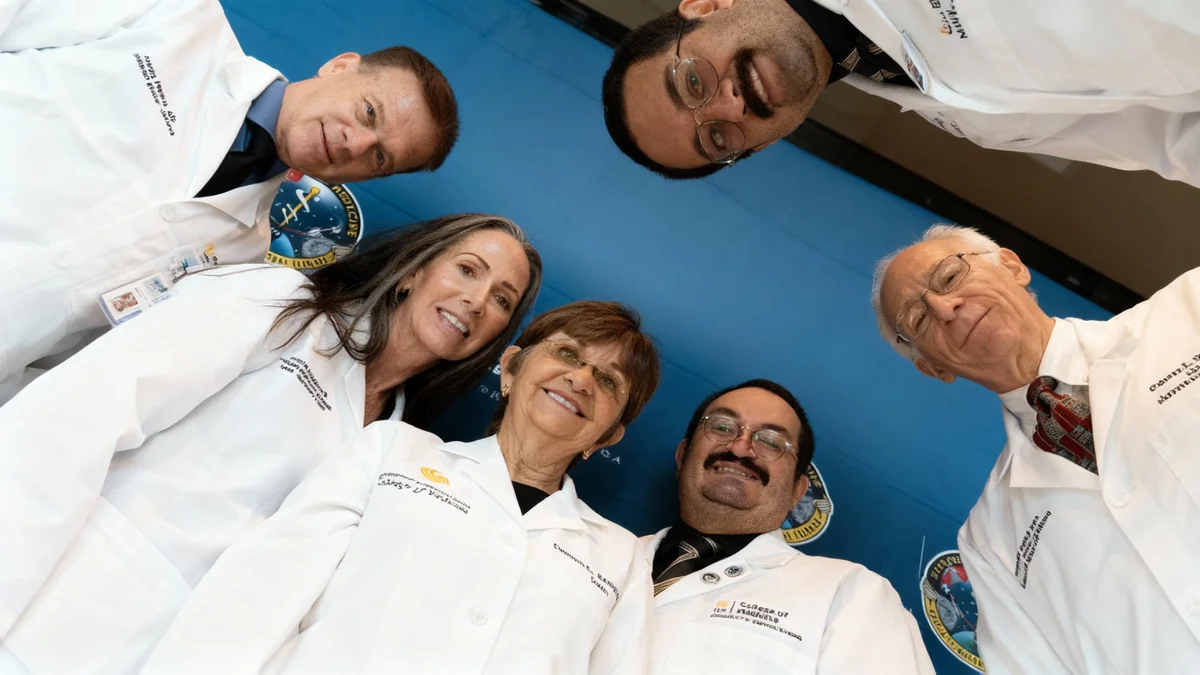Researchers at Embry-Riddle Aeronautical University have established a new laboratory to create living human tissue models. The initiative aims to study the damaging effects of spaceflight on the human body and develop treatments to protect astronauts during long-duration missions.
The Space Physiology Antibody and Cellular Engineering (SPACE) Laboratory uses advanced bioengineering to replicate conditions like bone loss and weakened immunity, with findings that could also benefit health on Earth.
Key Takeaways
- Embry-Riddle has launched the SPACE lab to research health issues caused by space travel.
- Scientists use human stem cells and 3D bioprinters to create functional tissue models, often called "tissue chips."
- The research targets conditions like bone loss, anemia, and impaired immunity experienced by astronauts.
- Discoveries from the lab aim to produce therapeutics for space missions and address aging and disease on Earth.
A New Frontier in Aerospace Physiology
Embry-Riddle Aeronautical University has expanded its research capabilities with the launch of the Space Physiology Antibody and Cellular Engineering (SPACE) Laboratory. The lab operates within the Department of Human Factors and Behavioral Neurobiology’s Aerospace Physiology Program.
The facility's primary mission is to investigate and find solutions for the health problems associated with space travel. Astronauts face significant physiological challenges in low-gravity and high-radiation environments, including degenerative conditions affecting bones, blood, and the central nervous system.
"We aim to understand how space environment stressors affect physiological systems, and to use emerging technologies to discover countermeasures," said lab co-director Dr. Emel Sen Kilic.
Dr. Kilic and co-director Dr. Cassandra Juran, both assistant professors, lead the effort. They emphasize that the interventions developed could have dual applications, addressing "challenges both in space and here on Earth."
Building Human Models for Space Research
The core of the SPACE lab's work involves creating sophisticated biological models. Researchers use human pluripotent stem cells, which have the ability to develop into any type of human tissue. By applying specific chemical "growth factors," scientists can guide these cells to form tissues found in the brain, bone marrow, or lungs.
These engineered tissues are integrated into small devices known as "tissue chips" or "organoids." These miniature systems allow researchers to simulate the harsh conditions of spaceflight in a controlled lab setting and observe the effects at a cellular level.
What is a Tissue Chip?
A tissue chip, also known as an organ-on-a-chip, is a small device containing living human cells in a 3D microenvironment that mimics the structure and function of human organs. It allows for testing drugs and studying diseases without using human or animal subjects.
This technology also allows for testing potential therapeutics. According to Dr. Juran, some of these models can even be sent to space for direct testing. "NASA, NASA’s Center for Advancement of Science in Space, and the National Science Foundation have already sent tissue chips and organoid technologies to the International Space Station," she noted.
Supporting Future Lunar Missions
The work at Embry-Riddle directly supports major national space initiatives. Dr. Juran is a principal investigator for a NASA experiment involving a brain-liver-gut model designed to study the effects of high radiation. The team hopes to send this model into space.
The system is being engineered for automated operation for up to six months, a requirement for use on the Gateway lunar space station, which will be unoccupied for extended periods.
The SPACE lab also contributes to NASA's AVATAR (A Virtual Astronaut Tissue Analog Response) mission, which will fly "organ-on-a-chip" devices on the Artemis II lunar mission. This technology opens the door for personalized medicine for astronauts.
"We can evaluate potential astronaut-on-a-chip personalized medicine for an astronaut’s response to spaceflight before they go to space," Juran explained. By using an astronaut's own cells, researchers can pre-plan the most effective medications, supplements, and exercise routines for their specific biology.
Interdisciplinary Collaboration and Student Involvement
The SPACE lab works closely with Embry-Riddle’s Omics Lab for Health and Human Performance, directed by Dr. Amber Paul. The Omics lab provides molecular research capabilities, analyzing biological samples from missions like the civilian-crewed Polaris Dawn and the FRAM-2 polar orbit mission.
This collaborative environment provides significant opportunities for undergraduate students to participate in high-level research. The hands-on experience allows them to contribute to solving real-world problems in aerospace medicine.
Student Research Projects
- Bone Regeneration: Kevin Kowalski, a biomedical engineering student, works on cultivating mouse bone cells. He notes that astronauts suffer hundreds of microfractures that struggle to heal in microgravity. He is interested in using the lab's CellInk BioX 3D bioprinter to print live cells into bone tissue.
- Combating Superbugs: Yegor Bushnev, an Aerospace Physiology major, is experimenting with flavonoids—natural compounds found in plants—to enhance the effectiveness of antibiotics. This could help fight bacteria that become more virulent in space and combat antibiotic resistance on Earth.
Kevin Kowalski was introduced to the lab's work in a mechanical engineering class. "I would have never known about any of this," he said, "and yet it’s some of the most interesting stuff when you think about space travel."
Yegor Bushnev, who plans to attend medical school, said his experience at the university solidified his interest in aerospace medicine. He noted that the research must be able to "both help astronauts in space and science on Earth."
Preparing the Next Generation of Scientists
The faculty leaders of the SPACE lab highlight the unique training their students receive. By connecting fundamental biology with the aerospace field, the program prepares students for specialized careers.
"Students learn molecular biology techniques and engage in research relevant to both spaceflight and human disease," said Dr. Sen Kilic. "They develop interdisciplinary skills that are valuable in biotech, biomedical research and aerospace health."
Dr. Juran described the students as "uniquely qualified" due to their early exposure to advanced research. This integration of education and cutting-edge science positions Embry-Riddle at the forefront of preparing for the next era of human space exploration.





